Memory Has Become a Product and That Product Might Fail.
The platforms we use to store memory are unfit for our current economic and social state. It's time to rethink where memory currently lives and renew our relationship to it.
Employee Leaves With His Belongings as His Firm Declares Bankruptcy Amid 2008 Financial Crisis
As the cost of cloud storage exceeds budgets, disrupting business functions, there looms an inability to preserve our digital memories. In response, the tech industry is reverting to a more cost-efficient, time-efficient, and durable vessel: magnetic tape. This shift is not nostalgic, but strategic, and it mirrors a deeper unease with the impermanence of digital life. Just as our data storage systems have prioritized efficiency over longevity, our communication tools have done the same, reducing expression to rapid, disposable exchanges. Most messages today are sent, received, and forgotten in rapid succession, a process made possible only by sacrificing presence and intention.
Cache Capsules is a Research through Design (RtD) project funded by Syracuse University’s SOURCE Fellowship
A TACTILE ALTERNATIVE
Scroll Player and Storage Capsules Prototype
Device In Use During User Testing
To combat the issues mentioned above, this "scroll" based messaging device proposes a speculative alternative to modern communication and data storage. It responds to the emotional detachment of digital messaging and the impermanence of cloud-based memory by offering a tactile, physical format. Users can create and exchange personalized scrolls by writing, drawing, printing, or pasting images that are then loaded and played on the device. Each scroll becomes a curated archive of intentional data, echoing the presence of magnetic tape compared to cloud-storage. This way of communication is meant to be a ceremony of presence and reflection that fosters awareness of how we connect.
Japanese Emaki Scroll
Drawing inspiration from the Japanese emaki scroll, a historical form of storytelling that blends image and text into a continuous right-to-left narrative. The tactile act of unrolling a scroll segment by segment creates a uniquely cinematic and mindful experience. This project reinterprets that format in a modern context, presenting the scroll not as a relic, but as a vessel for reflection, permanence, and intentional communication.

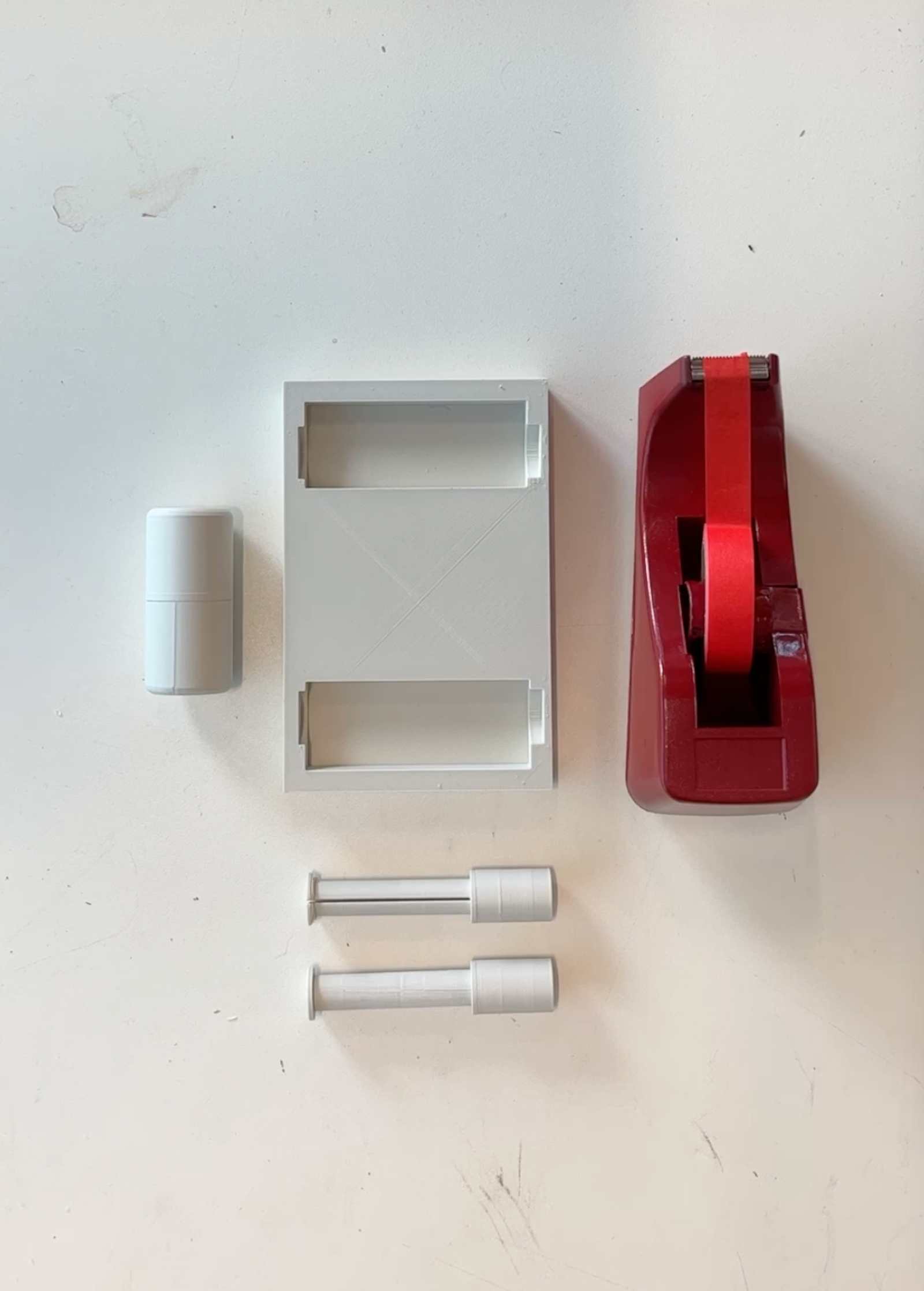
Scroll Customization Device Prototype
The player device and scroll are not the only tangible aspects of this project meant to encourage intentionality. The customization device, used to personalize each scroll, is also carefully designed to foster a deliberate and hands-on interaction. Above is an example of the device and a blank scroll sent to someone in order to customize.
Scroll Customization Instructional
Each message is sealed within a dedicated capsule. These capsules function as secure physical enclosures, protecting the scroll from damage. In this way, they become both containers of memory and units of analog data storage, and if you listen closely they make a nice popping sound upon opening.



Aluminum Capsule Prototype
Scroll Capsule Example
USER TESTING
To examine the realistic application of this system, a study was conducted with two volunteers. Lavesh and Gunesh, friends in their Twenties, were each asked to use the Customization Device and "scroll", to compose a message over the course of a day. Upon their return, they exchanged the messages they created for one another, and viewed them on the player device.
Ultimately, they both crafted thoughtful and personal messages.
Below are key takeaways from a semi-structured interview conducted following the experiment.
Finishing Touches Before Playthrough
At first, both participants approached the device with hesitation. It was unfamiliar and a contrast to their daily interactions, usually instant messages.
“It was fun… kind of exciting, because we don’t use this in our daily lives,” said Gunesh.
“But it was also difficult. The writing surface was small, and honestly, I haven’t written anything by hand in years. Everything is on computers now. My handwriting’s terrible.”
“But it was also difficult. The writing surface was small, and honestly, I haven’t written anything by hand in years. Everything is on computers now. My handwriting’s terrible.”
This struggle became the first point of reflection, writing by hand introduced friction. But that friction proved meaningful.
“As I was writing,” he continued, “I started thinking about stuff. When you’re texting, you just know what you have to say. But when you write it down with your hand, it makes you think differently.”
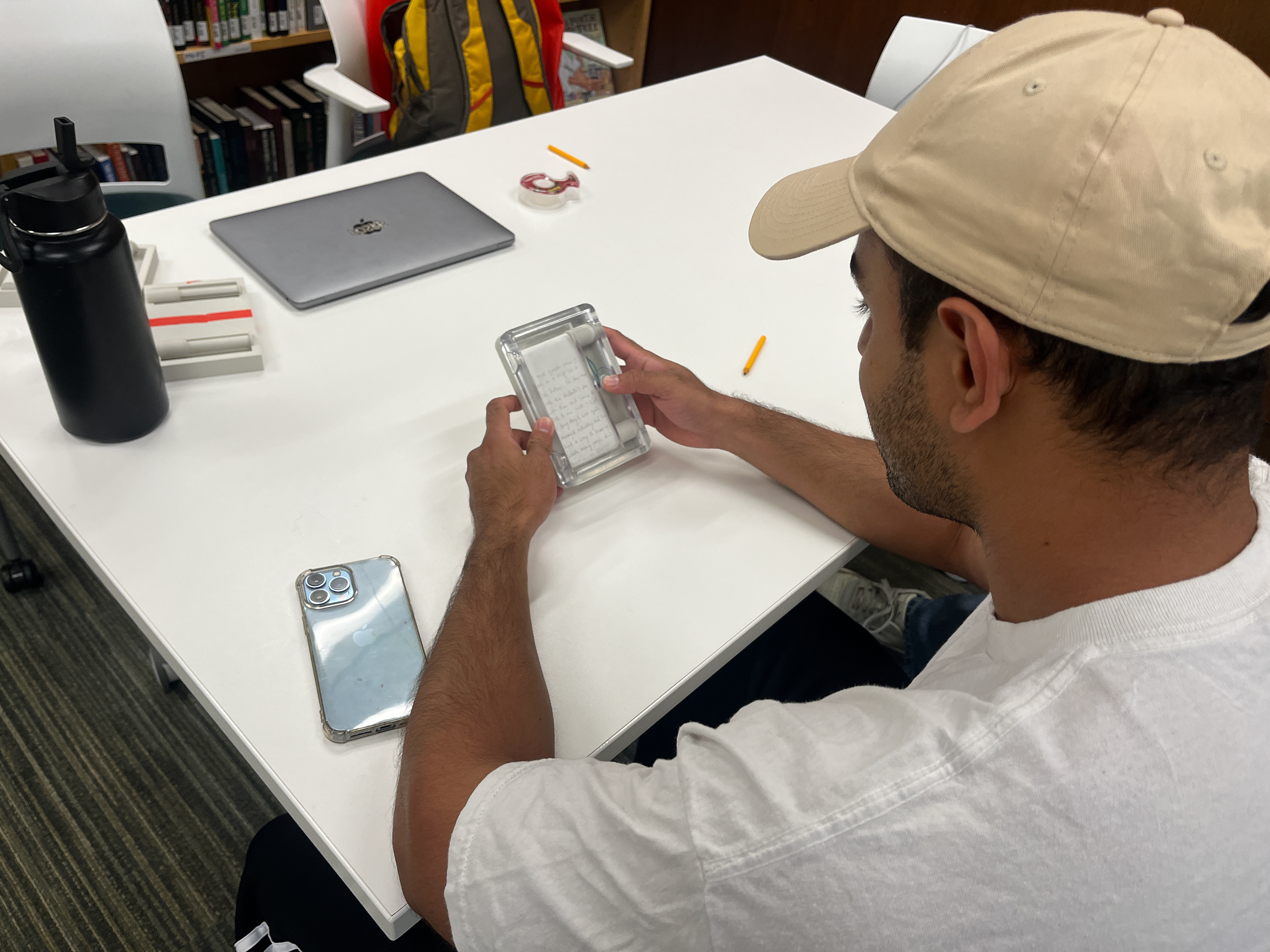

Gunesh Playing Message
Lavesh initially questioned the need for the exercise and project.
“At first, I didn’t feel like I needed to do it,” he admitted.
“I’m outspoken, if I feel something, I’ll say it. So what would writing on a scroll really add?”
“I’m outspoken, if I feel something, I’ll say it. So what would writing on a scroll really add?”
But the act of writing itself shifted his perception.
“When you sit down and start writing, you get hit with all these memories.
It’s like a flashback, seven months of friendship, different seasons, moments where we were both going through things. And suddenly, I realized how much we’ve been through together.”
It’s like a flashback, seven months of friendship, different seasons, moments where we were both going through things. And suddenly, I realized how much we’ve been through together.”
This reflection wasn’t prompted by direct interaction with the other person, it emerged through the slowness and materiality of writing.
Lavesh Playing Message
As the interview developed, Lavesh and Gunesh began to discuss the broader implications of how communication is shaped by design, especially in terms of speed. Dating apps and Social Media were some of the things that came to mind for them.
“People just swipe now. Ten conversations at once. It’s too fast. That’s not what love is, You start believing that’s normal, but it’s not. Real feelings don’t come from just saying ‘hey’ and ‘good morning.’ over text.” Said lavesh. “You don’t even know what you’re doing half the time, It’s unconscious. You like something on Instagram, or swipe right, it doesn’t even register.”
The conversation then turned toward a shared anxiety around automation and hyper-efficiency in modern products.
“There’s a kind of new fear of automation,” I said. “Where everything is too perfect, too convenient. If everything is perfect, then where can we even go from there?”
Lavesh agreed, recalling a moment of frustration when his Amazon Alexa system stopped working for a few days.
“My whole room is automated through Alexa,” he explained. “I had to get up and manually plug in each device—oh my god.”
This highlights how even the simplest tasks had become oddly inconvenient in the absence of automated systems. Reflecting on this, Lavesh drew a comparison between the scroll device and older media.
"Back in the day we had those cassettes, with the same mechanism, so I think there was a time when people would sit and take a pencil and try and fix it with a pencil or something, and you enjoy it, taking two minutes of your time to unroll and reroll it. It’s the same as this."
Through this test, the device didn’t simply enable reflection for these users, it uncovered an unspoken desire for it.
---------------------------------------------------------------------------------------------------------------------------------------------------------------------------------------------------------------------
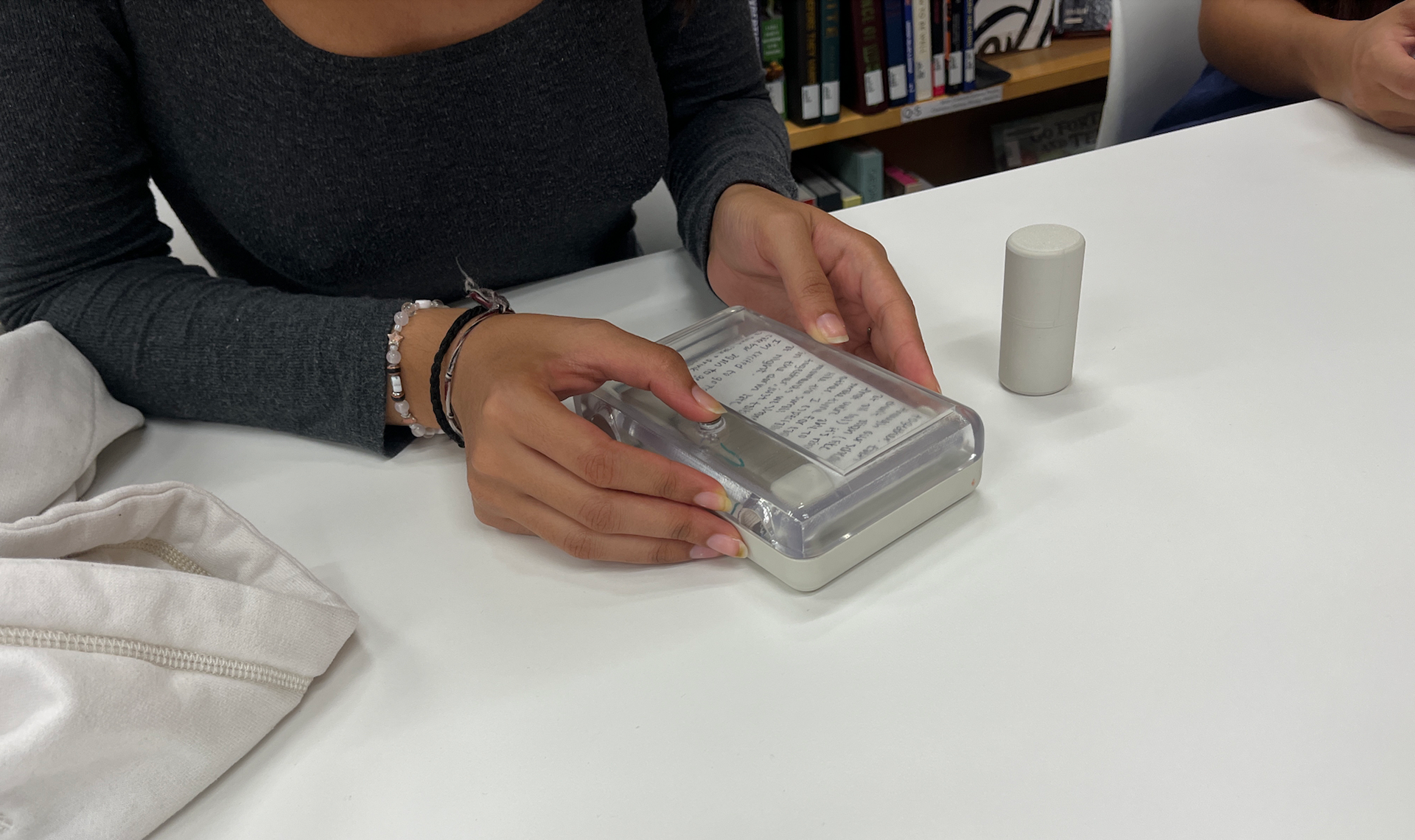
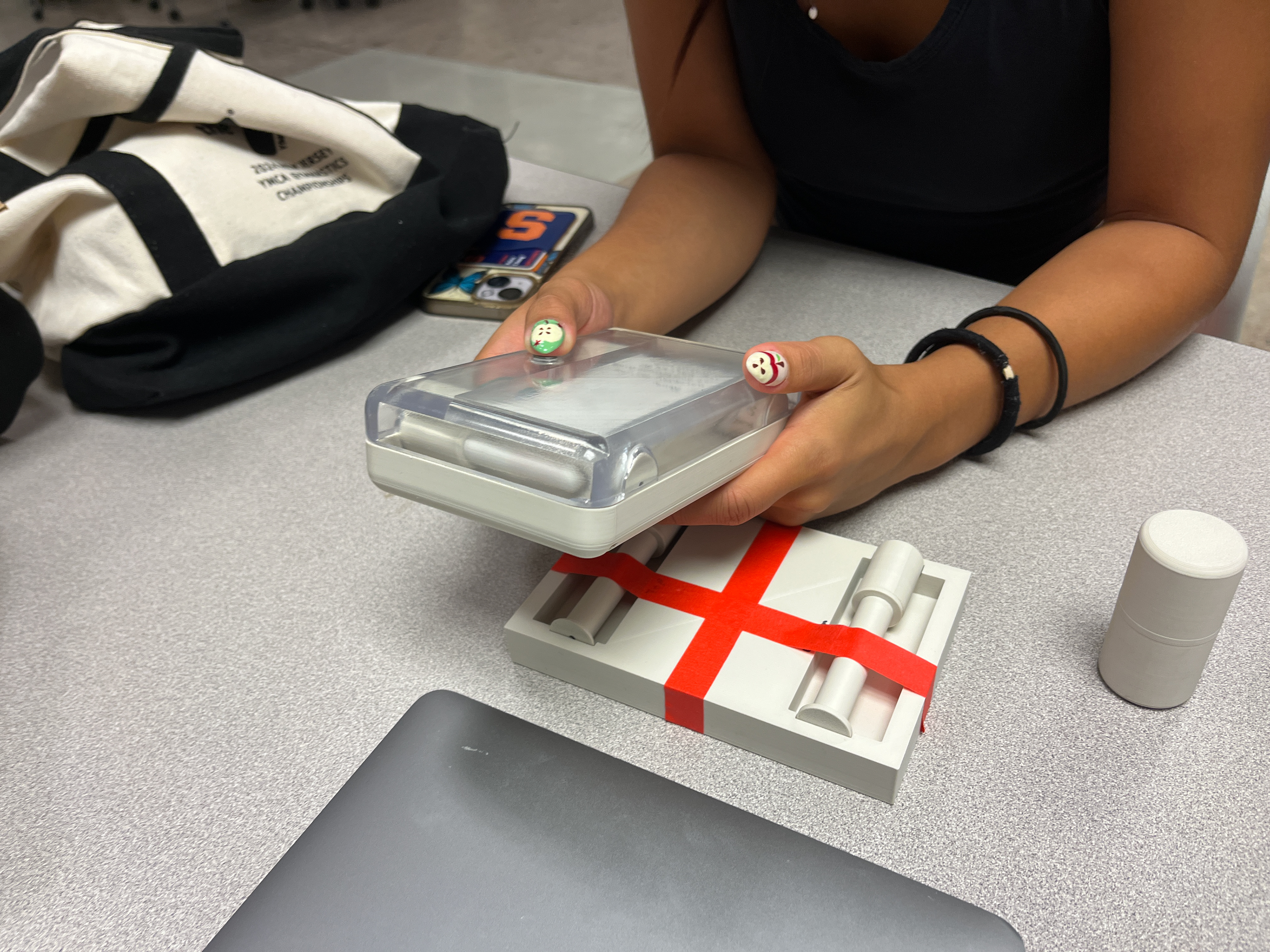
Stills From Session Two
PROTOTYPE BUILD Process
Condensed Prototype Process Video
The prototyping process began with an exploration of both mechanical and electronic camera systems, mainly drawing inspiration from the 35mm film. I initially experimented with motor control using an Arduino and a NEMA 17 stepper motor however, after testing, I realized a simplified system powered by a DC motor and lithium battery is more efficient and logical for supporting the device’s ethos of tactile interaction. For the casing, I considered various shapes that might evoke a sense of familiarity within the context of modern communication. While an organic, stone-like form was initially appealing, I ultimately settled on a clean, rectangular shape reminiscent of a smartphone.
Preliminary Rendered Object
Preliminary Rendered Object Exploded View
Rendering the device in Keyshot helped me with finalizing the CMF. I decided on a transparent top enclosure. This decision was made to reveal the internal mechanism, highlighting the physicality of the device and adding a layer of intimacy to the object for the user.
Electronics/Components - 3.7 LiPo Battery, TP 4056 Charging Module, N20 DC Motor, Custom Spool Enclosure, Thermal Receipt Roll, Push Button
Prototype Graveyard
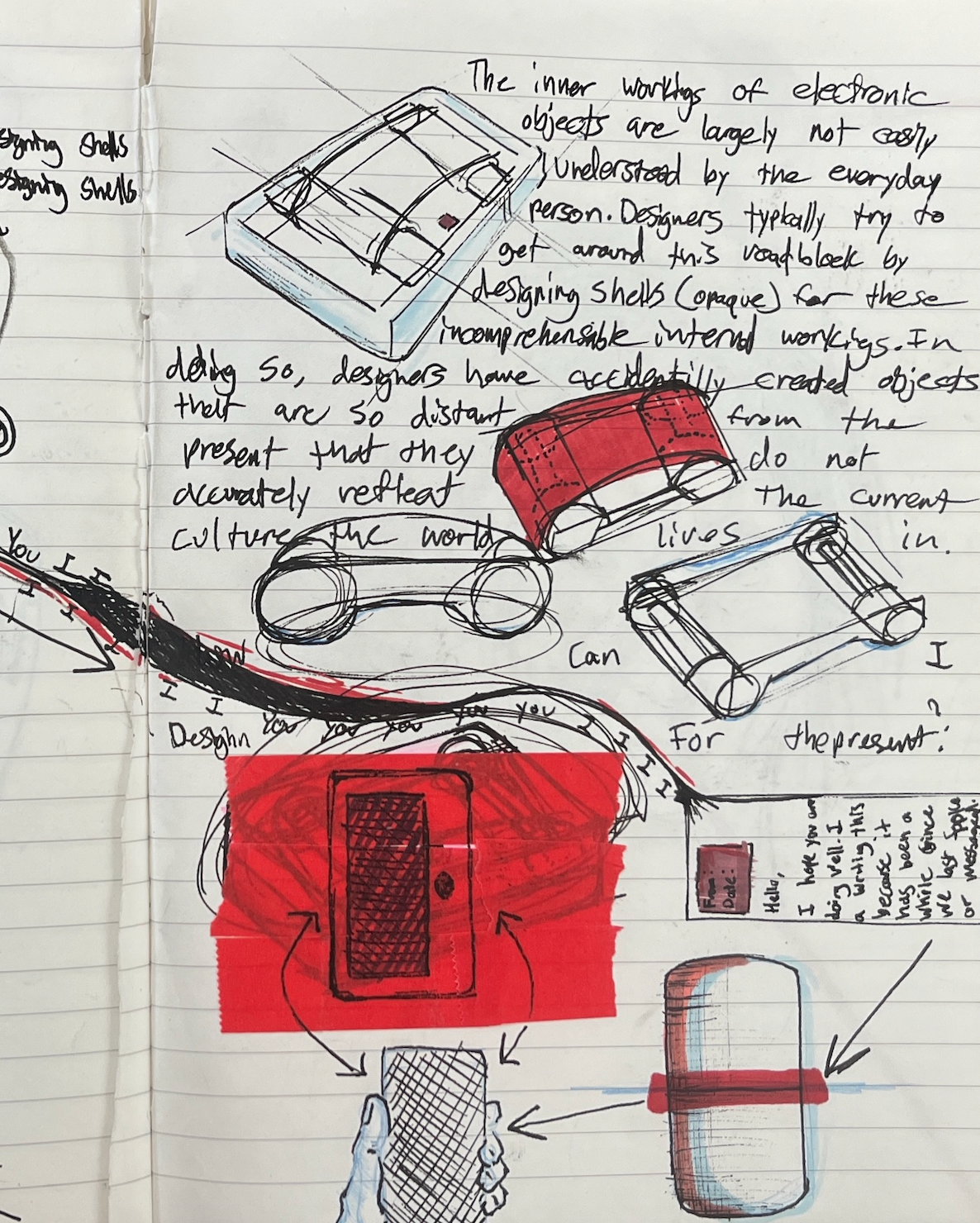
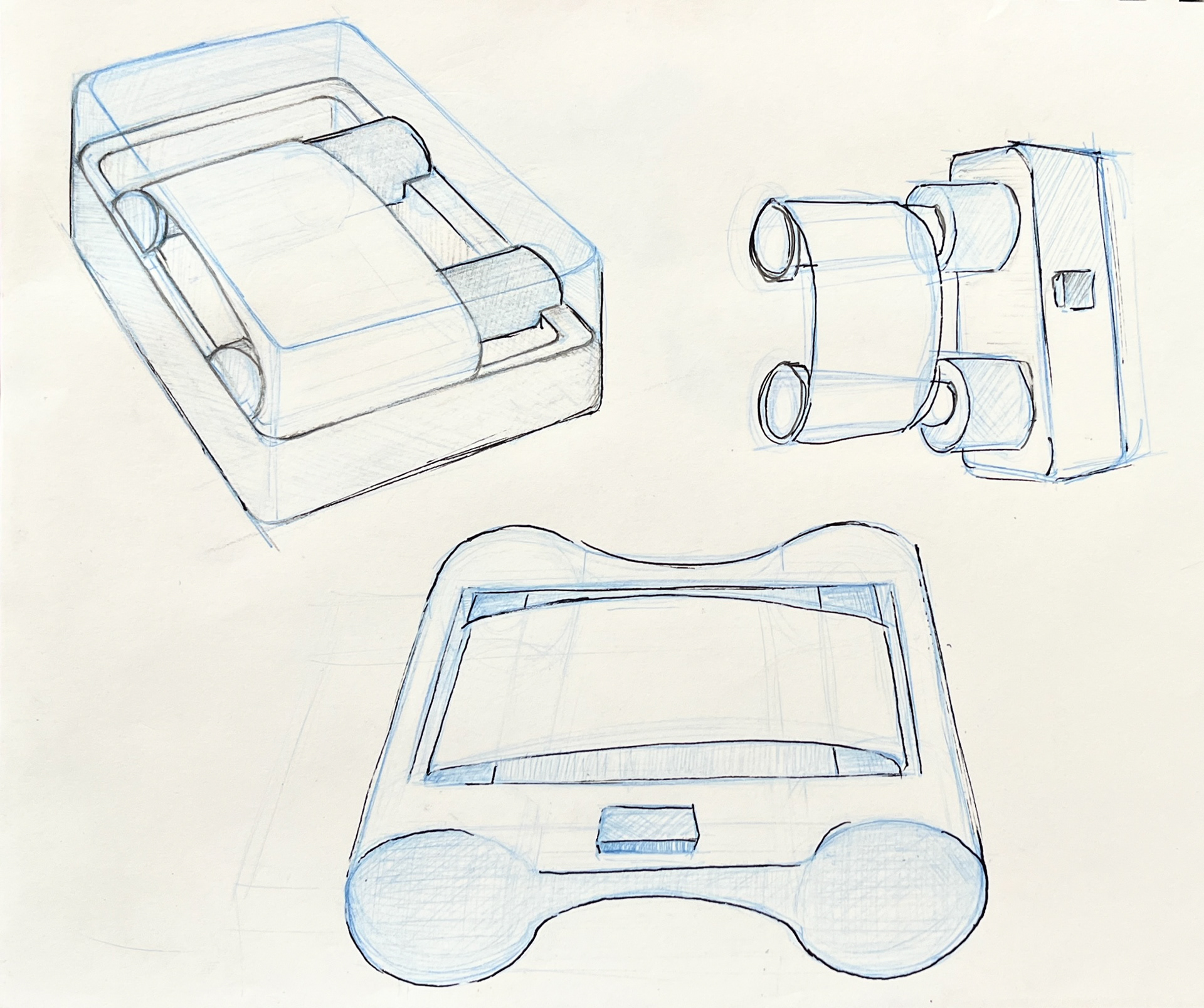
Quick Ideation Sketches
